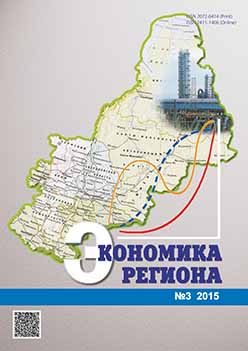Имитация особенностей репродуктивного поведения населения в агент-ориентированной модели региона
Simulating the Reproductive Behavior of a Region’s Population with an Agent-Based Model
Author(s): Valeriy Leonidovich Makarov, Albert Raufovich Bakhtizin, Elena Davidovna SushkoSubject(s): Economy, Geography, Regional studies
Published by: Институт экономики Уральского отделения Российской академии наук
Keywords: agent-based modelling; demography; types of population reproduction; forecasting of population size and structure of the region;
Summary/Abstract: The research analyses the impact of the inequality of demographic transition on socio-demographic characteristics of the regional population and on the dynamics of these characteristics. The study was conducted with the help of computer-based experiments (simulations), which was run on the original agent-based model. The model is an artificial society, and personal characteristics of its members are set so that they could represent age-demographic structure of a simulate region. The agents are divided into two subgroups, which differ in their reproductive strategy. The first group has traditional strategy with high birth rate. The second group has considerably lower birth rate, observed in the modern developed societies. The model uses stochastic approaches to imitate the principle processes of population growth: mortality and morbidity. Mortality is set according to age-sex specific mortality coefficients, which do not differ across the population as a whole. New agents (child births) appear as a choice of agents – women of reproductive age, and the choice depends on the subgroup. The overall age and social structure of the region is aggregated across individual agents. A number of experiments has been carried out with the model utilization. This allowed forecasting the size and structure of the population of a given region. The results of the experiments have revealed that despite its simplicity, the developed agent-based model well predicts the initial conditions in the region (e.g. age-demographic and social structure). The model shows good fit in terms of estimating the dynamics of major characteristics of the population.
Journal: Экономика региона
- Issue Year: 11/2015
- Issue No: 3
- Page Range: 312-322
- Page Count: 11
- Language: Russian

